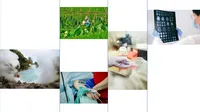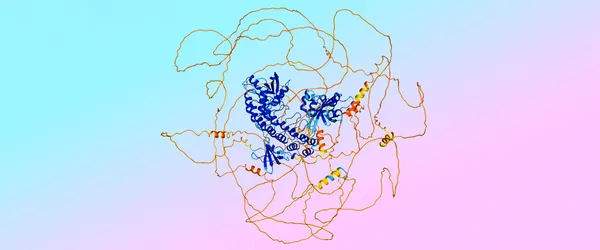Here’s how researchers in Asia-Pacific are using AlphaFold

Proteins are the microscopic machines that drive nearly every biological process, from how our bodies fight disease to how life itself evolves. Their function is defined by their unique 3D shape, but for decades, mapping that shape was a slow and expensive process. Five years ago, we introduced AlphaFold, an AI system that accurately predicts protein structures based solely on their amino acid sequences, and made it freely available to the world.

Today, AlphaFold is used by over three million researchers, with more than a third of them in the Asia-Pacific region alone. From tackling deadly diseases to discovering entirely new forms of life, here are five ways researchers in this region have used AlphaFold to make breakthroughs in medicine and science:
1. Fighting a ‘silent killer’ in Malaysia
Melioidosis, a disease caused by the bacterium Burkholderia pseudomallei — most commonly contracted through contaminated soil or water — claims nearly 90,000 lives each year. At the National University of Malaysia, Dr. Su Datt Lam’s team is using AlphaFold to understand how the bacterium’s proteins help it survive and spread, accelerating the development of new drugs to combat this "silent killer."
2. Uncovering new clues to Parkinson’s disease in Singapore
Researchers Jackwee Lim and Yinxia Chao at Singapore’s Agency for Science, Technology and Research (A*STAR) and National Neuroscience Institute (NNI) used AlphaFold to create a 3D visualization of a protein linked to Parkinson's, a neurodegenerative disease. This revealed how the body's own immune system can disrupt the protein’s function, opening new paths for earlier diagnosis and targeted therapies.
3. Seeing the invisible drivers of disease in Korea
At Korea’s Advanced Institute of Science & Technology (KAIST), Professor Ji-Joon Song’s team studies how disruptions in the way DNA is organized can lead to cancer and other diseases. AlphaFold allowed his team to map previously unseen regions of a key protein, uncovering a hidden interaction site. As he puts it, "AlphaFold is like the internet for structural biology."
4. Discovering a new frontier of protein shapes in Taiwan
Dr. Danny Hsu’s team at Academia Sinica used AlphaFold to study a protein of unknown structure, and predicted a "71-torus knot" — an exceptionally complex protein fold. The team later confirmed this prediction in the lab, proving AlphaFold can help scientists discover entirely new phenomena.
5. Finding new life in Japan’s hot springs
While studying microbes in the hot springs of Japan, Dr. Syun-ichi Urayama’s team discovered unusual viruses. Using AlphaFold to predict their protein structures, the team confirmed they belonged to a widespread, previously unknown family of life, revealing a new branch of molecular evolution.
These five stories from the Asia-Pacific region — where we have over 13,000 research papers citing AlphaFold — represent just a fraction of what scientists have discovered since we introduced the technology. From tackling neglected diseases to revealing evolutionary history, AlphaFold has fundamentally changed biological research, empowering a global community of scientists to accelerate their work and tackle humanity's greatest challenges.
Learn more about AlphaFold — including the co-award of the 2024 Nobel Prize in Chemistry to Demis Hassabis and John Jumper for its development — on the Google Deepmind blog.






